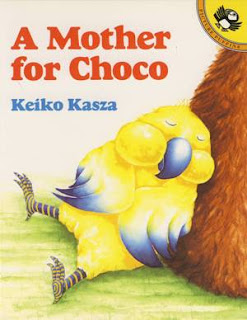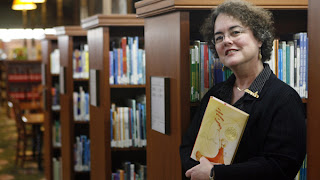Locomotion is written by author Jacqueline Woodson. This novel is aimed at students who are in middle school, grades 6-8. Woodson tends to focus on a lot of family related issues within an urban setting where black students are the main characters or there is an interracial mix. Her work could be seen as controversial since it deals with different issues such as death and suffering, which some feel students should not be exposed to within schools. I personally believe her writing is fantastic and controversy should not over shadow what she has to offer as great literacy to sink into within a classroom.
Rating: 4.5 out of 5 Stars
Summary: Lonnie is a nine-year-old boy who has lost his parents in a house fire. Separated from his younger sister and in foster care, Lonnie searches to fit in and come to terms with the tragedy that has stricken his family. This book captures the thoughts and feelings from Lonnie’s perspective through poetry. This novel is sectioned out into many different kinds of poems, short and long, that really give the reader and insight not only to Lonnie’s feelings but also exposing them to the genre of poetry and ways it can be used.
I really enjoyed reading this book. At first, I was a little skeptical because I am not a fan of poetry. I was proven wrong as the poetry beautifully depicts what Lonnie is going though. There is a lot of sadness in this book. Lonnie is constantly struggling to understand and come to terms with the loss of his parents while he is separated from his sister. A major theme of this book is acceptance. Lonnie wants to be accepted at school, within his foster home, by his sister’s foster parents, and also he personally needs to start to accept his situation and the death. Religion is also strongly referenced. Ms. Edna his caregiver is constantly praying and talking to God and Lonnie’s sister Lili also tells him that he needs to find God and gives him a Bible. Religion is a touchy subject within schools so I think it is important for teachers be careful when they go about focusing on this topic within the book.
Since Lonnie is experiencing a lot of different emotions and sometimes people can use writing as an outlet. This book is a great example how poetry can be used as an escape and a way to get feelings out. This is a good message to convey to students. Poetry and writing is not just factual or for a academic purpose, writing can be an outlet and way to express something that cannot be said aloud or understood. This also can be used to expose students to different types of poetry and Locomotion would be a great book to include within a poetry unit. Poems such as haiku’s and free verse are included along with many more. The writing is descriptive and precise that they would serve as wonderful examples.
Finally, this book also provides a different perspective. It is told from the viewpoint of an African American boy. In children’s or young adult literature, it is not as common to have a viewpoint from a minority group. I think it is great way to include diversity and get students to understand how and what the world is like through someone else’s eyes. Some of the language is even written how a nine-year-old boy would spell and even pronounce certain words.
Overall this is a quick, easy read but sends a powerful message. It is also a little outside the box in that it is a entire novel of poems but it still is just as meaningful as a personal narrative or a typically written novel. This is a great book to change up the reading selection and give students a different taste from many different standpoints.
Jacqueline Woodson is an award winning author and has been recognized for her outstanding work. Get information on Woodson herself, other books, and the sequel to Locomotion; Peace, Locomtion here.

































